Review by Pete Vack
All photos are from the book and used with permission of the publisher
Philippe Gaston Grümmer and Laurent Friry have produced a fascinating, informative set of volumes, combining Carrosserie Grümmer photos, drawings and documents with a delightful look at French concours d’ elegance events between the wars.
Come on, surely you have heard of Carrosserie Grümmer; y’know, the French firm that specialized in Surbaissées and Aeroprofils? No? Well don’t feel too bad, for in the first place there were dozens of French coachbuilders and even the most successful…Keller, Gallée, Binder, Figoni et Falaschi, Letourneur et Marchand, and Saoutchik are still relatively obscure.
Gaston Grümmer’s exclusive coachbuilding firm lasted only about ten years, from 1925 to 1935, when it failed due to the recession. And of the 600 cars with Grümmer bodies presumably built, only ten survive worldwide, so their presence at auctions and car shows has been very limited. But the Grümmer story is fascinating, well told, abundantly documented, and thoroughly enjoyable. It is written by Gaston Grümmer’s son Philippe-Gaston Grümmer and Laurent Friry, an author of two Joseph Cugnot award-winning books on French cars.
As the story goes, one day while in the attic Philippe-Gaston found a large trunk full of archives relating to his father’s work and realized how valuable they would be to automotive history. This treasure resulted in a book of two volumes, 736 pages, 1,023 images consisting of outstanding photos, drawings, detail sketches, and more. It is a treasure thankfully passed on to us.
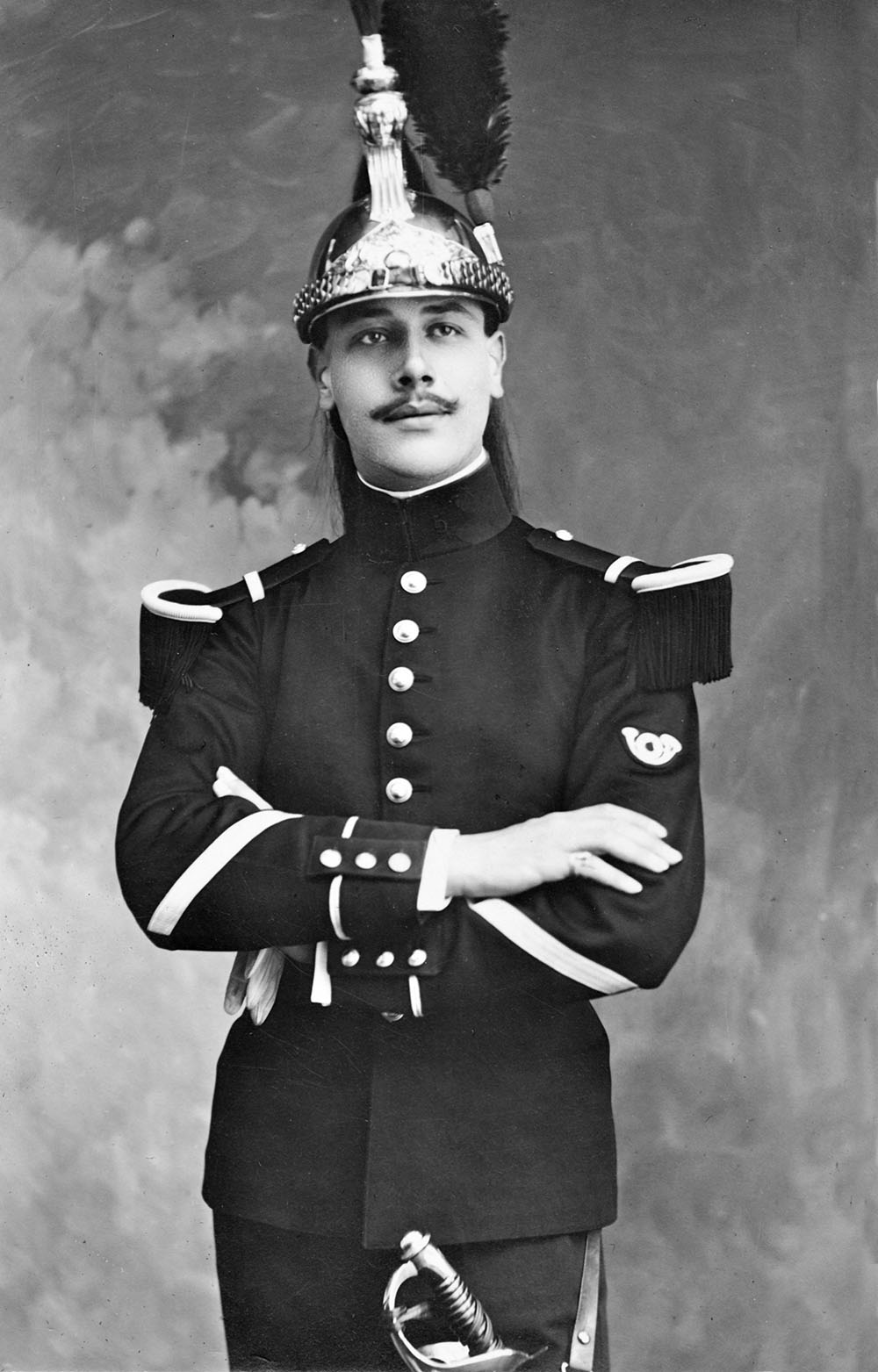
A dashing young Gaston Grümmer in the uniform of the 5th Cuirassiers Regiment in Tours. He would serve in the cavalry, the trenches, and as a pilot in WWI.
A most unusual coachbuilder
Gaston Grümmer (1892-1965) was born into a family of craftsman that originally hailed from Germany. In 1881, Gaston’s father Antoine Joseph took over a upscale carriage maker in Paris and established Maison V. Morel M. Grümmer , Fabrique de Voitures. The company was on the forefront of the transition from carriages to horseless carriages, and by 1905 was known for luxury coachwork on Mercedes and Panhard chassis. In 1909 his father passed away leaving a thriving business to his wife and sons.
Tall, handsome, well-bred and educated, Gaston was trained in every aspect of coachbuilding. However, he loved the cavalry, and after his father died, he joined Saint Georges’ Squadron. Danerously following his passion, Grümmer would experience World War I on horseback, as a soldier in trench warfare, and finally as an aviator. In 1911 he was posted to the 5th Cuirassiers Regiment but Gaston was seriously injured when his horse bolted. He left the service to recover but as soon as World War I was declared joined again and was sent to war to face the German cavalry. In battle, his horse was shot out from under him and, badly injured, he recovered only to return to serve in the trenches, where his talent as a photographer helped show the dismal life of trench warfare. Falling in love with the airplane, he volunteered his services as a flyer, survived two plane crashes, the last of which required lengthy hospitalization. The photos, and drawings, many by Gaston, of this era are superb.
From cavalry to carrosserie
After the war Gaston returned to help is mother and brother run the firm, renamed Etablissements Grümmer, and successfully evolved the company into series production of car bodies for firms such as Lorraine Dietrich and Panhard. But by 1924 Gaston wanted to pursue luxury coachbuilding, thus Carrosserie Gaston Grümmer was established in October to cater to the high end of the market.
Transformables, 1920s style
Grummer took up the patents offered by Belgian coachbuilder Albert d’Ieteren which featured a transformable convertible design with roll-up windows that disappeared into the door panel. Nevertheless, the cars presented in 1925 were more sporty tourers and torpedoes, most with little or no weather protection, but would garner a lot more publicity at the rounds of Concours d’Elegance events.
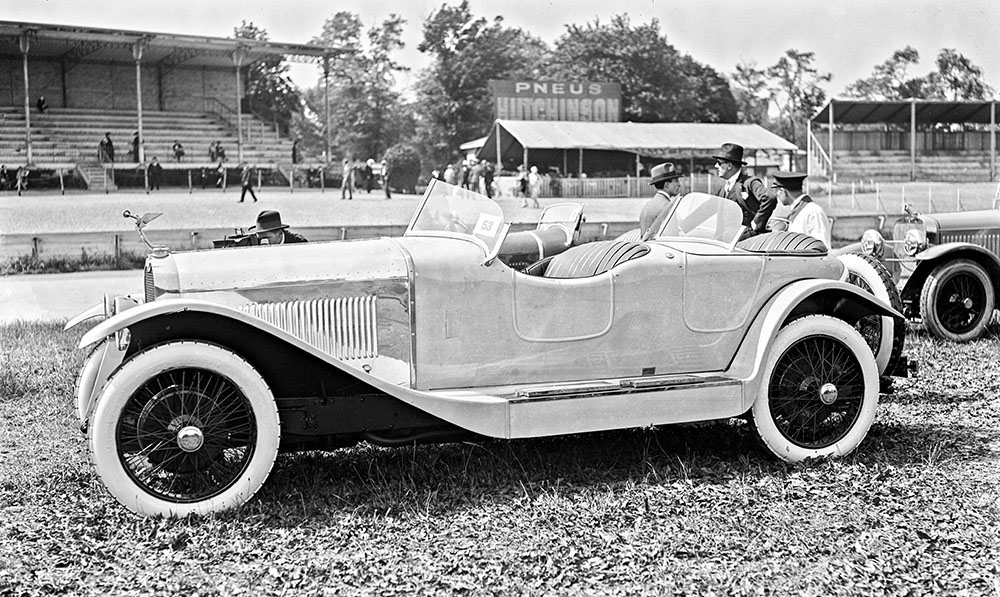
The Omega Six would not live long but Grummer bodied this one with an attractive torpedo,
and damn the weather.
The Etienne Bunau-Varilla patents
While retaining rights to build the transformables, Grummer knew he needed something to set his work apart from others and met an obscure inventor by the name of Etienne Bunau-Varilla, who had developed a way to lower the passenger compartments below the frame of the chassis for a racier look and more room. Thus was born the famous “Surbaissées” design, and it was licensed for use by Carrosserie Grümmer.
Carrosserie Gaston Grümmer Concours 1926-1935
To no one’s surprise, Carrosserie Gaston Grümmer was an immediate success. The new “Surbaissées” layout meant that almost all of his creations looked or were lower and sleeker than the competition. Gaston himself was no newcomer and knew all the right buttons to push. Clichy, where the business was located, is part of Paris; a tall dark and handsome war hero had ample access to the right crowd.
The best way to advertise new cars aside from racing (probably the only Grümmer body raced was on an Alfa 1750 chassis, at Le Mans) was to follow the almost endless circus of auto shows and concours d’elegance events. Since these events were well-photographed and documented by the many new car magazines which sprouted up after WWI, the authors wisely used the copious material to track the trajectory of Grümmer designs, year by year, via the shows and concours, aided by the many photos of Grümmer-bodied cars that took part in the concours.
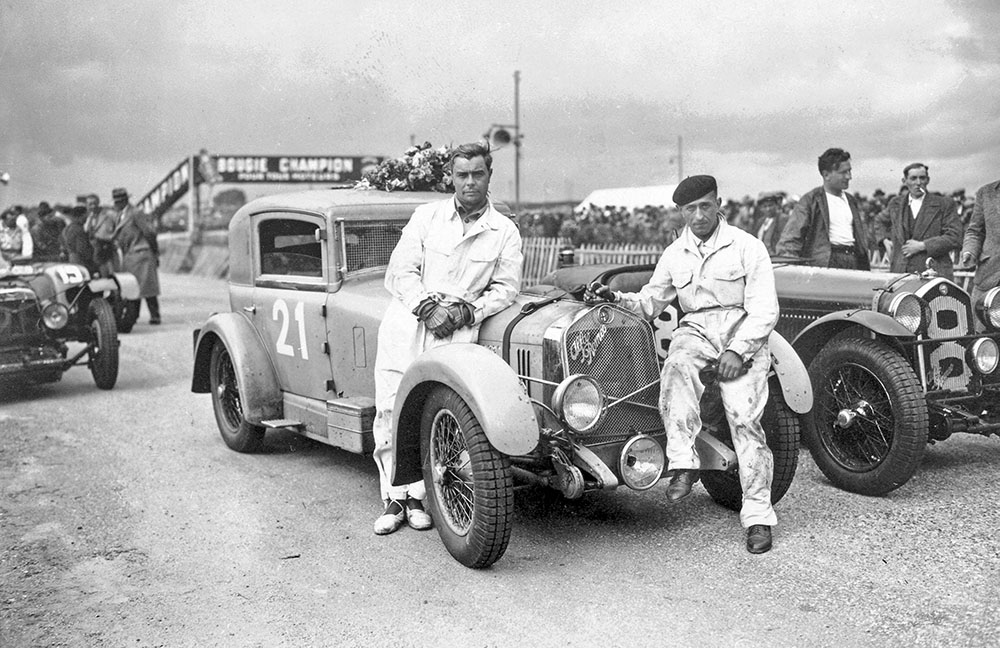
Grümmer bodied at least two Alfas, and one took part in the 24 hours of Le Mans in 1933 with the team of Rousseau (left) and Paco, (right). They would finish eighth overall and first in the 2 liter class.
Each year from 1925 to 1935 constitutes a chapter in the two volumes. Not lost to history and part of Appendix Five is the list of the many appearance and prizes won, beginning with the Concours d’Elegance, Nice Automotive Week, then the Parc des Princes in Paris, on to Deauville, Trouville, Montlhéry, Casablanca, Vichy, La Baule, Cannes and that is just a short list. In 1927 alone, there were eleven concours d’elegance, but as the recession bit, by 1935 there were only two shows left, or at least listed in the book.
Glamor, snakes and folly
The authors give us an inside look at the famous (and primarily French) concours d’elegance events, describing the cars, the models and the awards won by the company. Perhaps as interesting as the cars themselves were the attractive female presenters, and the authors not only name them but in many cases provide short biographies of the glamorous and often famous women who posed in the latest Paris fashions next to the latest creations of Grümmer, Saoutchik and Franay.
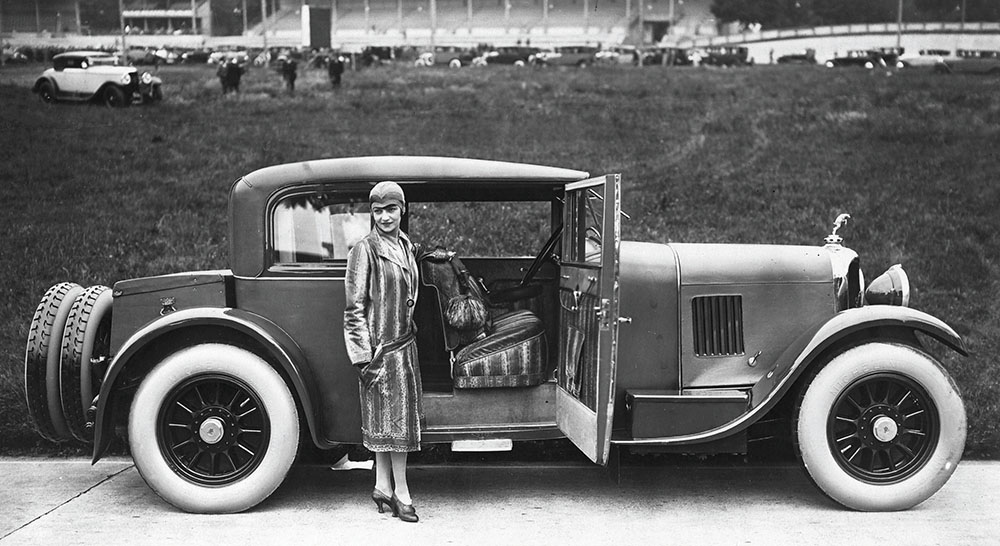
French actress Nadine Picard poses in snakesking outfit next to a Panhard 20 CV, also dressed in snakeskin.
Nevertheless we should put this into perspective, as did Peter Larsen in the book The Kellner Affair. “The only limit was the artistic creativity of the carrossier and the depth of the client’s pockets. It was art for art’s sake in this rarified world, and functional considerations were strictly secondary. It was also a celebration of the trivial and frivolous at the expense of the serious work demanded by technological advance.”
Nor were the majority of Grümmer designs outstanding, memorable, or even that attractive, despite winning multiple concours awards; that too must be put into context. Famous concours judge (and writer, diplomat, playwright) André de Fouquiéres (1875-1959) wrote about the multitude of awards given at the concours and according to Patrick Lesueur*, the jury handed out an impressive quantity of honors for excellence, first class, of exceptional merit and so on and everyone went home happy.
Thinking out of the boxes
After running the course with the EBV Surbaissées concept, Grümmer came up with what he called the Hirondelle design, or swallow tail. It worked once in a while, but was totally non-functional and often just plain clumsy. Finally the future, or at least the present, came home to roost at Grümmer when in 1933 Gaston partnered with Guillaume Busson , an ex-coachbuilder whose passion was aerodynamics.
The team was awarded a U.S. Patent for a ‘wraparound’ style called the “Aeroprofil” which incorporated windows that extended into the roof for both the windshield and doors. The lack of curved glass at the time meant multiple pieces of flat glass were used the effect was rather ungainly. Still, it was a serious attempt to modernize coachwork and make it more efficient.
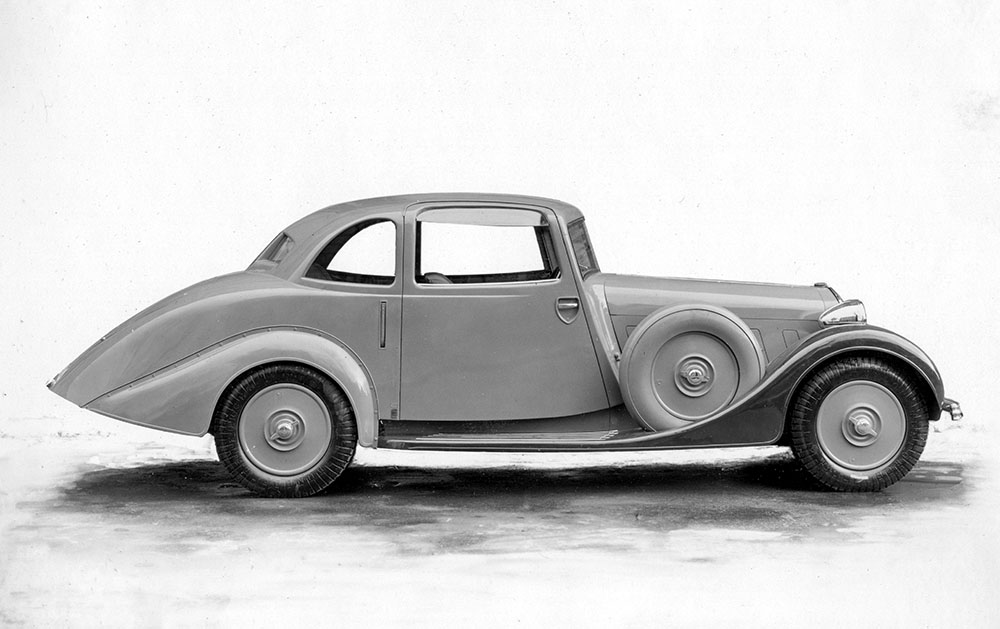
The Alfa Aeroprofil in profile. The doors extended into the roof, but in this case the windshield did not. No matter, it was not attractive.
Grümmer launched the Aeroprofil concept on a Delage D8 chassis and sent it to the U.S. Back in Europe he obtained an Alfa 6C1750 chassis and tried to refine the concept, but the car looked unbalanced, if not downright unattractive.
Despite the hope that the Aeroprofil would catch on, it didn’t (a similar attempt known as the Chrysler Airflow also met with public apathy); the recession was deepening and buyers stayed away in droves. In 1935, Gaston Grümmer closed his shop, went into the insurance business, and probably thought little of his years as a carrossier. The photos, drawings and documents were packed in a trunk, put in an attic where they remained until the 21st century, a delicious and family-oriented time capsule.
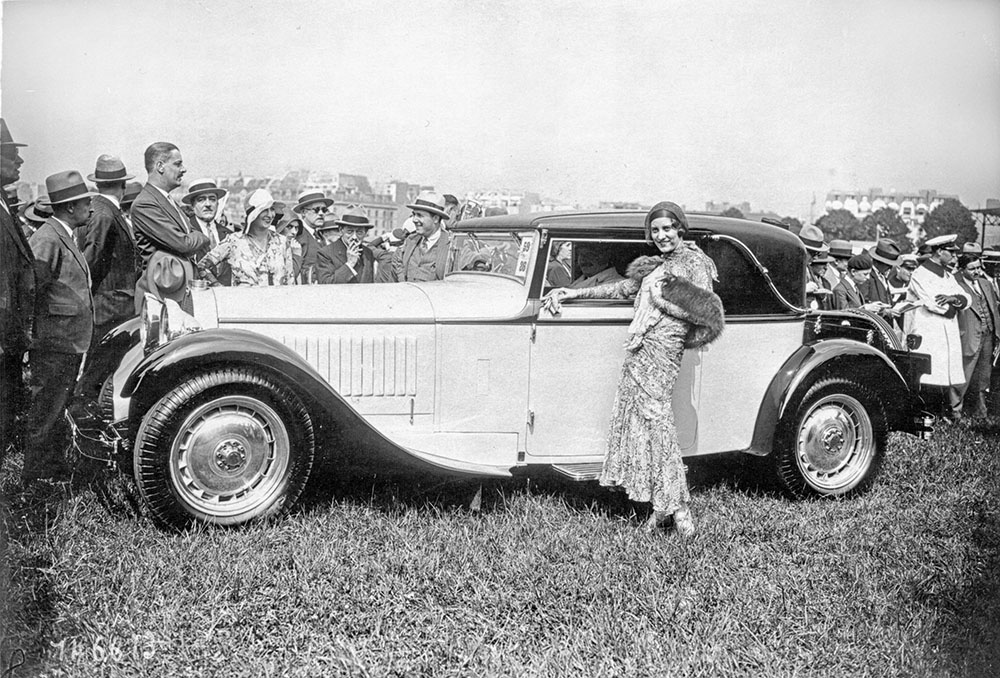
One of the ten existing Grümmer-bodied cars is this exceptional T46 Bugatti presented by Kira Skiarova. Gaston Grümmer can be seen holding his hat in this photo from 1930.
Volume I takes the history of the company and family through 1933. Volume II covers 1933 to 1935, but includes an interesting look at the ten remaining Grümmer bodied cars. Appendix three consists of more than 150 superbly reproduced Grümmer drawings made for his clients (and most but not all constructed) adds a great deal to the book. There is an Index and bibliography and acknowledgement page.
Grümmer, The Art of the Carrosserie, was thoroughly enjoyable is a hands-down must-have for anyone interested in French coachbuilders.
Grümmer, The Art of the Carrosserie
Authors: Philippe Gaston Grümmer and Laurent Friry
ISBN: 978-185443-290-2 October 2017
219 by 290 MM, 736 Pages, two volumes with dust jackets and slip case
Standard Edition: $295
Snakeskin Deluxe: $1800 photo of snakeskin slip case below
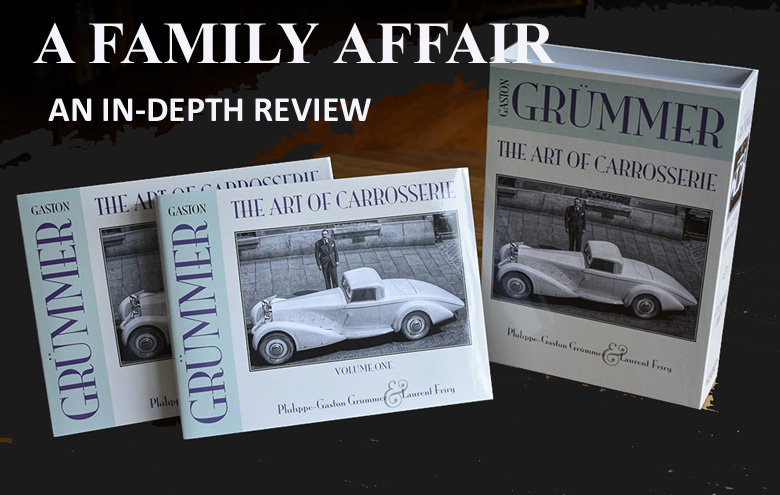
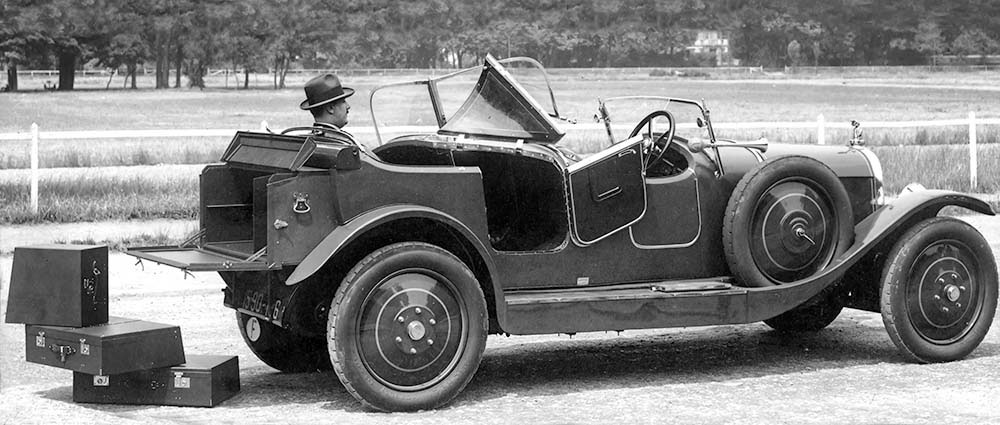
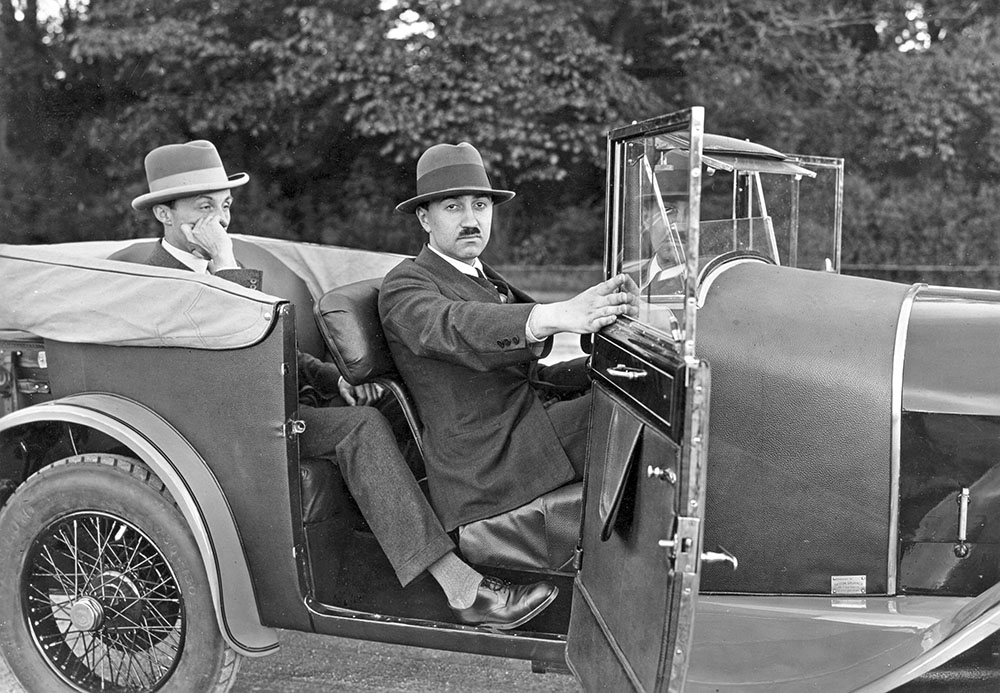
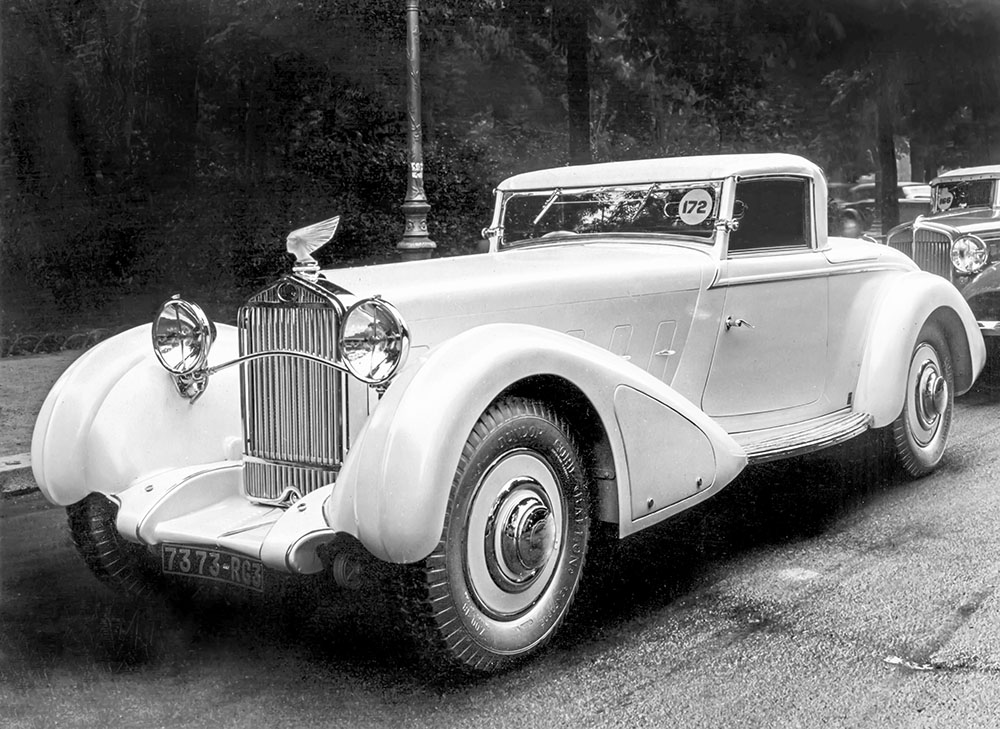
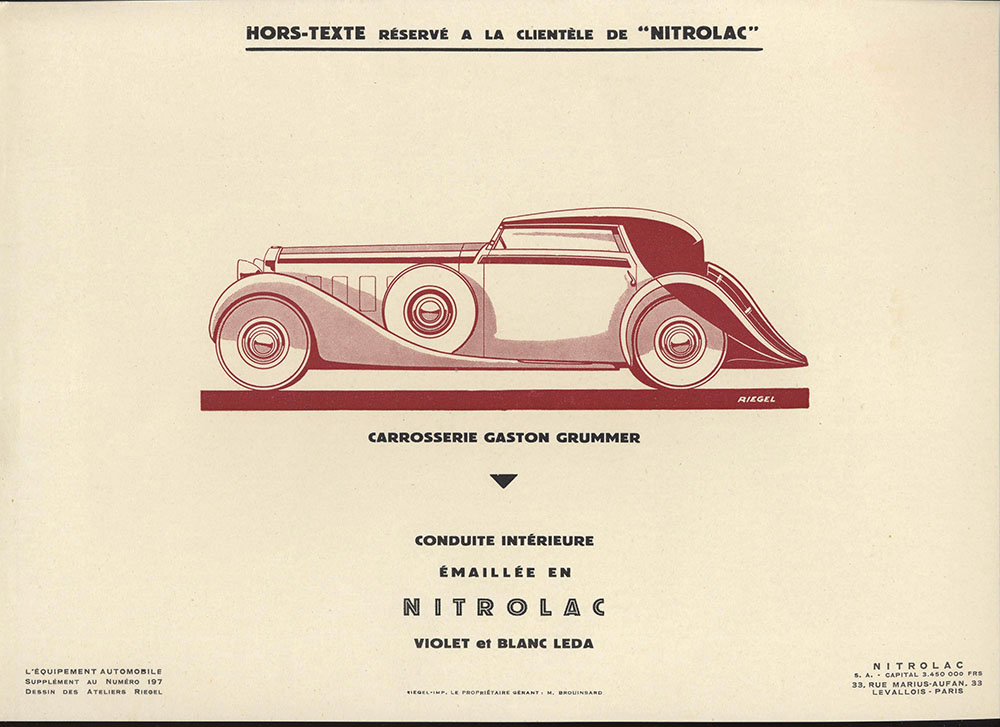

thank you for this Wonderfull review
Philippe GRÜMMER
author
philippe.grummer@orange.fr
Paris
And thank you for the wonderful book!
Pete Vack
A great coachbuilder!
I received my copy a few days ago. The picture material in this book is simply outstanding.
Peter Larsen
This is much more than an ordinary automotive coffee table book. It is a fascinating multi-generational family history reaching form the era of harness making at the highest level to the elegant French Concours of the 20’s and 30’s. It is an amazing story of a Gentleman who never should have survived to build what he did.